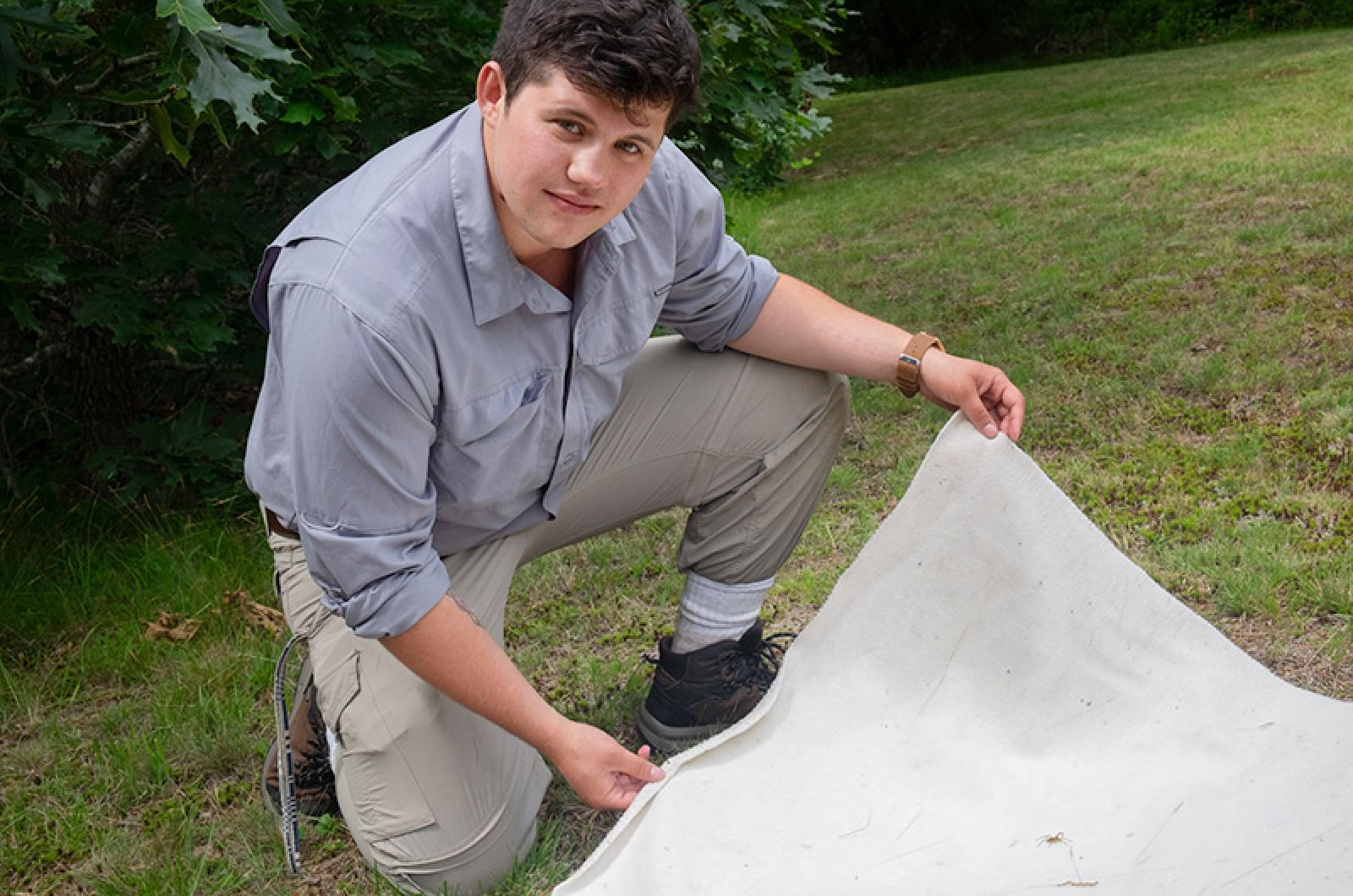For some, Jonah Rehak’s insect obsession is hard to understand.
“My family hates the freezer,” he said. “There are just vials of June bugs, lady bugs, fireflies and moths everywhere.”
But he is not only a collector, he’s also a molecular biologist. Next fall he will graduate with a bachelor of science degree from the University of Vermont. He is also the assistant director for the Martha’s Vineyard Tick-Borne Illness Reduction Initiative.
“Last summer I was the tick intern, but I just got promoted to assistant director of the tick program. It’s kind of a formality, but it is really nice,” he said.
Mr. Rehak serves alongside field biologist and program director Dick Johnson. Two days a week the men respond to calls solo, scheduling and conducting yard sweeps in Aquinnah, West Tisbury, Tisbury and Edgartown. To tackle the big projects, they team up.
“Three days a week it’s just the two of us in a truck,” Mr. Rehak said. “We do the big properties Dick knows about in Chilmark and Chappy. I like those days together; we swap news bits, research and vegetarian recipes.”
“Both of us are just fascinated and distracted by nature,” he continued. “We were driving and Dick yelled stop! in the middle of the Edgartown-Vineyard Haven Road. He jumped out of the car and picked up this turtle. All the cars behind me are honking, and he tenderly took it over to safety on the side of the road.”
To the average human eye, ticks are small, but for Mr. Rehak they are not small enough. He wants to get to the cellular level. He even has a tattoo of a cell on his forearm. “I got it freshman year and I love it. It reminds me that things are smaller than they seem,” he said.
“I want to move towards microbiology, the borrelia that causes Lyme,” he continued. “It’s a corkscrew-shaped bacteria that the ticks pick up from the mice and then give to us.”
After college, Mr. Rehak hopes to attend graduate school in Boston or California. “In the end I want to be a professor. I love teaching people . . . I’ve always wanted to move to California. Those Vermont winters have broken me,” he said.
California, although far from the Vineyard, is not far from the ticks.
“California is another hot spot for ticks and Lyme,” he said. “There’s two types of black legged ticks: Ixodes scapularis which is the one here, and ixodes pacificus, which is the one over there.”
But even with plentiful subjects on the West Coast, leaving the East Coast tick population won’t be easy.
“I’m ready to move on from the program, but it is so important to do this research from the ground up,” Mr. Rehak said. “There’s Lyme disease programs in Cape Cod and Plymouth, but they just do education. They don’t actually look at the yards. Yard sweeps give such peace of mind to people. It’s the intersection of public health and ecology that I love.”
He continued: “Dick Johnson has been such an amazing mentor, because he taught me the importance of doing science on a community level. We hear people’s grievances, peoples worries, and we are able to focus our science in that direction.”







Comments (6)
Comments
Comment policy »